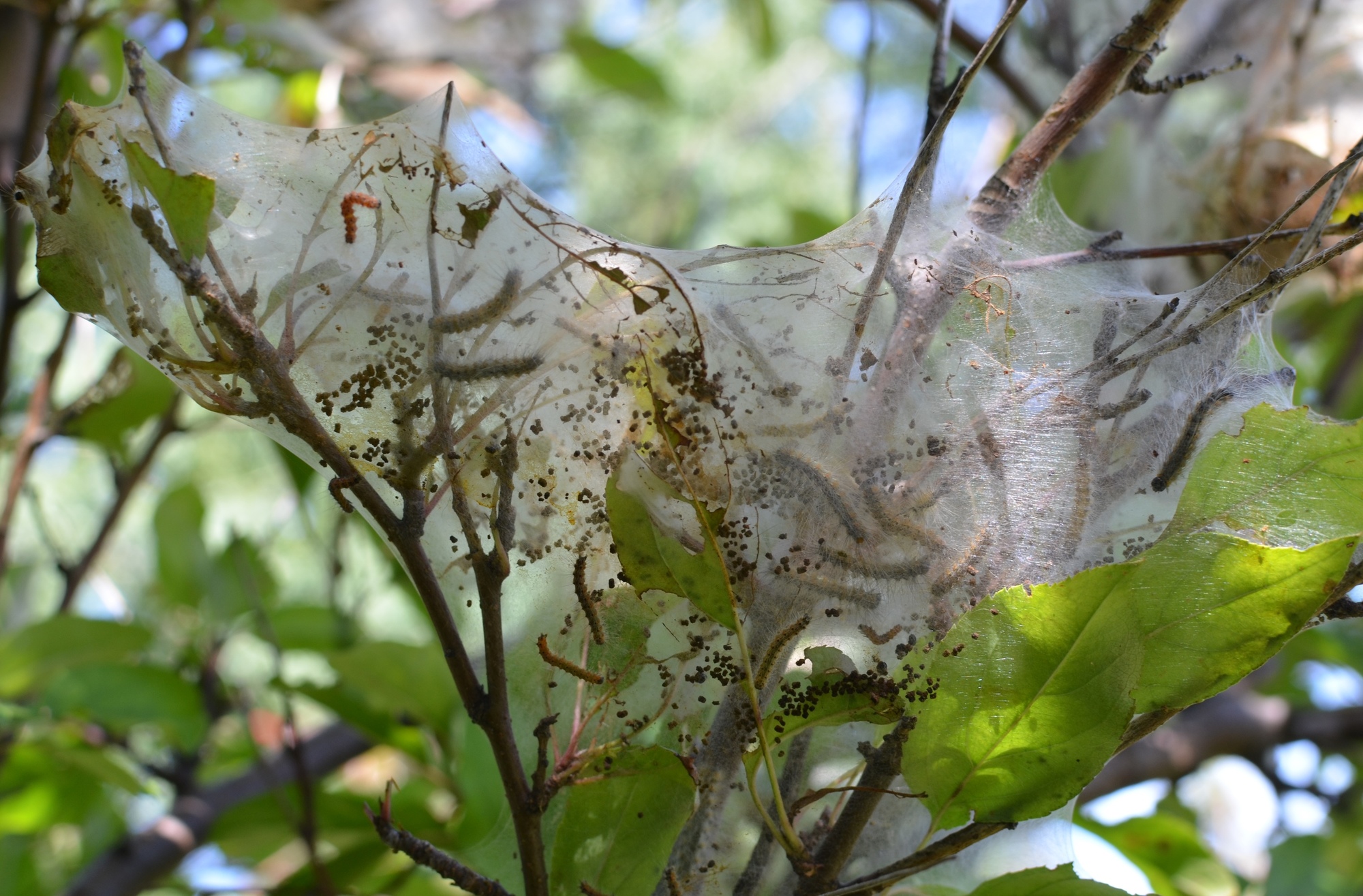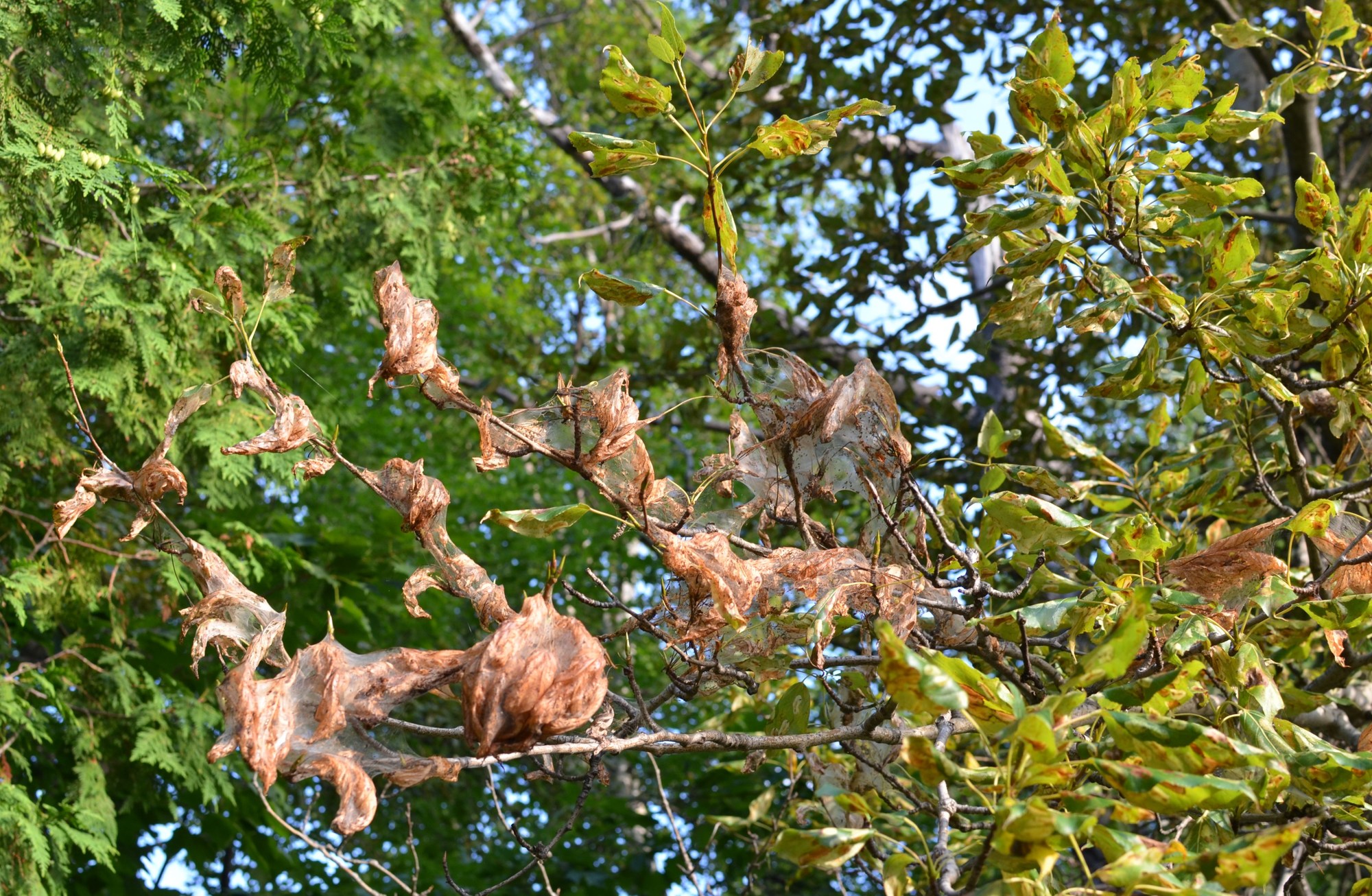|
Aug. 15, 2016
Contact: Bob Heyd, 906-228-6561 or John Pepin, 906-226-1352
DNR details fall webworm and tent caterpillar differences
Fall webworms showing up in Marquette County trees and shrubs
The Michigan Department of Natural Resources has received numerous recent reports of “tent caterpillars” in trees and shrubs in the Upper Peninsula, in particular, Marquette County. caterpillars” in trees and shrubs in the Upper Peninsula, in particular, Marquette County.
“These are actually fall webworms,” said Bob Heyd, DNR forest health specialist. “They are often confused with eastern tent caterpillars, which occasionally infest fruit trees.”
Heyd said the way to tell the two species apart is through behavior.
“The tent caterpillar only produces webbing in branch crotches, not around branches and leaves,” Heyd said. “Also, the fall webworm infests 80 different species of trees and shrubs, not just fruit trees.”
The webworm overwinters as a pupa (cocoon) with white moths emerging in late spring.
Each female webworm lays hundreds of eggs on the underside of leaves. The small hairy caterpillars feed in groups, removing just one surface of the leaf. These leaves turn brown and curl up.
Heyd said this mid to late season loss of leaves doesn’t harm the tree, and usually doesn’t kill the branch. A stressed tree might lose a few infested branches.
 As the caterpillars grow, they eat most of the leaves leaving just the larger leaf veins, as they expand their webbing to enclose more of the infested branch. As the caterpillars grow, they eat most of the leaves leaving just the larger leaf veins, as they expand their webbing to enclose more of the infested branch.
“This time of the year, the larvae leave the webbing and are found wandering around outside of the webbing on the trees and any surrounding structures, like your home,” Heyd said. “They will be present in many areas through August and even into September in some areas.”
Heyd said pruning and disposing of infested branches is commonly practiced, but is unnecessary for the health of the tree.
“Spraying next year in late June or early July will protect landscape trees from webworms if tree owners are concerned with aesthetics,” Heyd said. “Spray infested branches as soon as webworms are detected to minimize leaf loss.”
Heyd recommended spraying leaves, just outside of infested areas, so that caterpillars are impacted as
they expand their feeding. The spray doesn’t penetrate the insect’s webbing.
Biological sprays with Bt (Bacillus thuringiensis) are effective and don’t kill predators and parasites that help control webworm populations. Sprays with Bt also do not impact non-targeted insects like honey or bumble bees.
Fall webworms are native insects with many native parasites and predators. Webworm populations don’t generally last for more than a couple of years.
In general, the range of fall webworms covers the U.S., southern Canada and northern Mexico.
Find out more about fall webworms. Learn more about DNR forest health issues.
/Note to editors: Accompanying photos are available below for download. Suggested captions follow. Credit: Michigan Department of Natural Resources.
Branches: Webs of fall webworms cover the ends of branches.
Fall webworm: Fall webworms are native species to Michigan. An outbreak of the worms has been reported in several parts of the Upper Peninsula this year, in particular, Marquette County.
Web-1 and 2: A fall webworm webbing over leaves with worms present.
Work: Fall webworms working on the leaves of an apple tree. This photo shows the webworms, their webbing, partially eaten leaves and the remains of an infestation./
The Michigan Department of Natural Resources is committed to the conservation, protection, management, use and enjoyment of the state’s natural and cultural resources for current and future generations. For more information, go to www.michigan.gov/dnr.
|